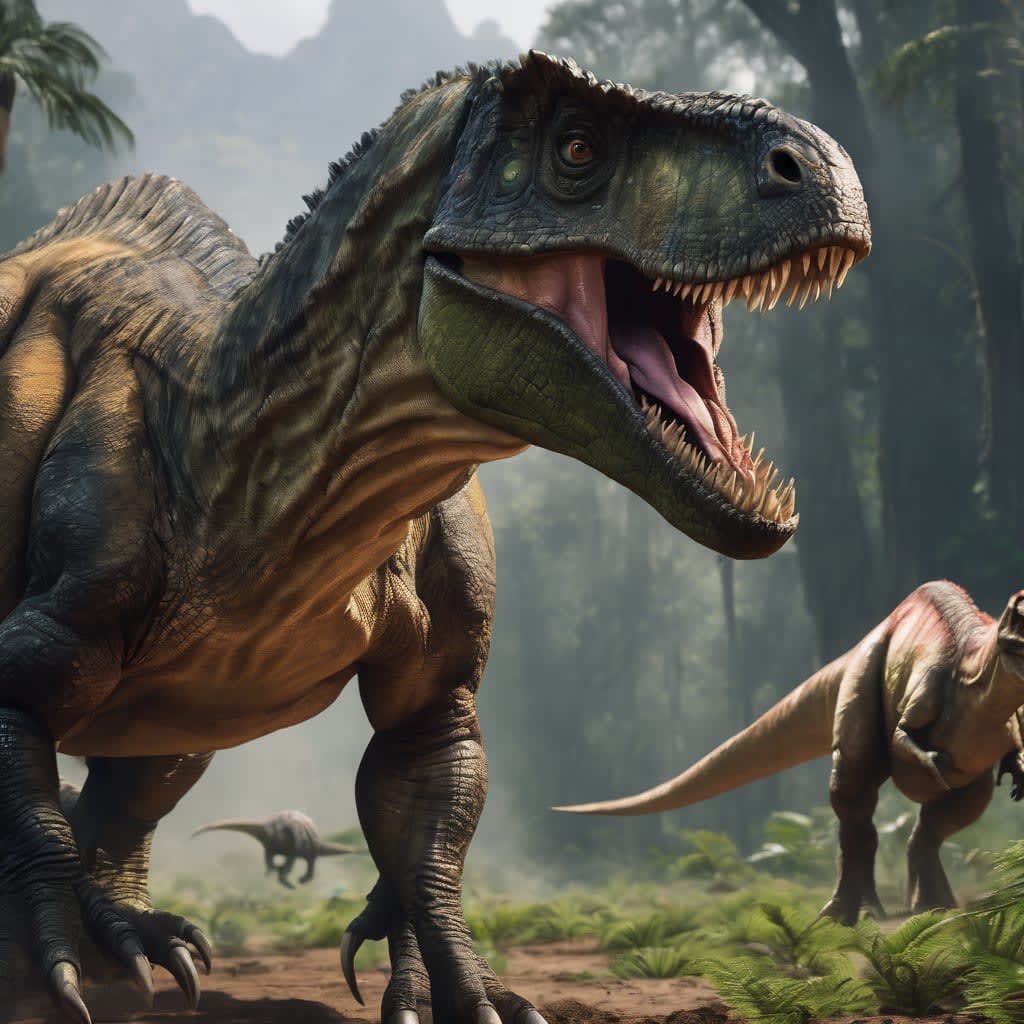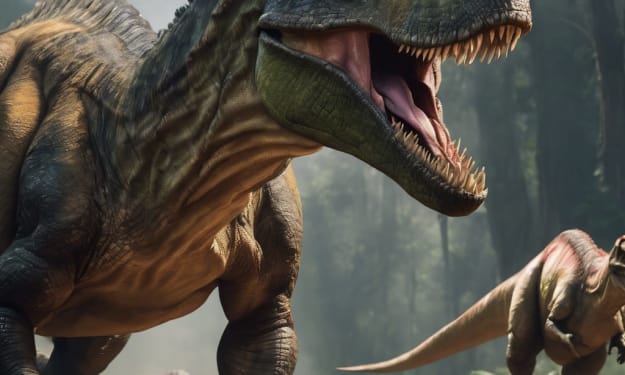The Forgotten Era (Part 2)
What Really Happened When The Dinosaurs Went Extinct

Travel back over 65 million years ago and witness a world where Earth, from above, shows a landscape both familiar and vastly different. The supercontinent Pangea has long split into Laurasia and Gondwana, later fragmenting further to reveal the early stages of the North Atlantic Ocean. This ancient epoch, known as the Cretaceous Period, is characterized by a hot and humid climate, high sea levels, and a richly diverse vegetation dominated by ferns, conifers, and the burgeoning flowering plants.
In the seas, creatures of immense size and prowess dominate. Among them are the ammonites, with their intricate spiral shells housing more than five thousand known species. These cephalopods move using jet propulsion and possess a parrot-like beak to crush their prey, showcasing their dominance in marine ecosystems.
Flying through the skies alongside birds are the remarkable pterosaurs, flying reptiles that rival the dinosaurs in size and majesty. The largest among them, like the Quetzalcoatlus with its 40-foot wingspan, exemplifies the era's gigantism. Pterosaurs, unable to swim underwater, instead fish from the skies, using their diverse beaks tailored for various diets—from plankton filtering to scavenging.
On land, dinosaurs reign supreme, evolving into an astonishing array of forms across all continents. From the dragon-headed giants like Diplodocus and Brachiosaurus, these colossal herbivores stretch the limits of terrestrial size. Their bones, hollowed to maintain strength while reducing weight, support their immense bodies, crucial for survival in a world where size offers advantages in defense and resource acquisition.
Amidst these herbivorous behemoths, carnivorous dinosaurs thrive, ranging from agile predators to massive scavengers like Tyrannosaurus rex. Alongside them, spinosaurs like Baryonyx, with their crocodile-like jaws and formidable claws, rule both land and waters, preying on fish and other dinosaurs alike.
Meanwhile, insects, crucial components of this ancient ecosystem, buzz and crawl across the landscape. Bees, ants, and butterflies appear for the first time, drawn by the scent of the first flowering plants—early forms resembling modern magnolias. This symbiotic relationship between plants and insects flourishes, shaping the diverse flora that adorns the evolving landscape.
Mammals, though small and cautious in the shadow of dinosaurs, carve out niches in this prehistoric world. Nocturnal adaptations, keen senses, and a burgeoning brain size differentiate them from their reptilian counterparts. Surviving in caves, hollows, and underground burrows, these early mammals feed on insects, invertebrates, and seeds, their sharp teeth evolving to efficiently catch, kill, and process food.
As the Cretaceous Period unfolds, Earth pulses with life—dinosaurs, reptiles, insects, plants, and early mammals interwoven in a dynamic dance of survival and adaptation. It's a testament to the resilience of life and the ongoing evolution that shapes our understanding of the ancient world.
Imagine a momentous event over 65 million years ago that would forever alter the course of Earth's history. A colossal asteroid, roughly the size of Mount Everest, hurtles towards our planet at an astounding speed of nearly 65,000 kilometers per hour (40,000 miles per hour). With a diameter exceeding 10 kilometers (6 miles) and weighing billions of tons, it targets the Yucatan Peninsula in what is now Mexico.
The impact is cataclysmic beyond comprehension. As the asteroid collides with Earth, it plunges into the crust with such force that the ground liquefies, creating a crater 30 kilometers (20 miles) deep. The energy released in an instant is unimaginable, vaporizing all water within a 60-kilometer (40-mile) radius and sending shockwaves rippling across the globe.
In mere moments, the landscape is engulfed in chaos. Thousands of creatures, unaware of their imminent fate, perish instantaneously near the impact site. The sheer magnitude of the event ensures their demise is swift and without suffering.
Meanwhile, farther afield, the aftermath unfolds with blinding speed. A brilliant flash of light marks the initial impact, followed swiftly by a shockwave that billows out as a cloud of vaporized rock and debris. The intense heat evaporates oceans and reshapes coastlines, leaving a lasting scar on the Earth's surface.
This singular moment, known as the Cretaceous-Paleogene boundary event, marks the end of an era. It heralds the extinction of countless species, including the famed dinosaurs, and paves the way for a new chapter in Earth's biological evolution.
The impact of this asteroid, though devastating, initiates a process of renewal and adaptation for the survivors, setting the stage for the diverse ecosystems that would emerge in the aftermath. It underscores the fragility of life on our planet and the profound impact of celestial events on Earth's geological and biological history.
About the Creator
Enjoyed the story? Support the Creator.
Subscribe for free to receive all their stories in your feed.






Comments
COS is not accepting comments at the moment
Want to show your support? Send them a one-off tip.